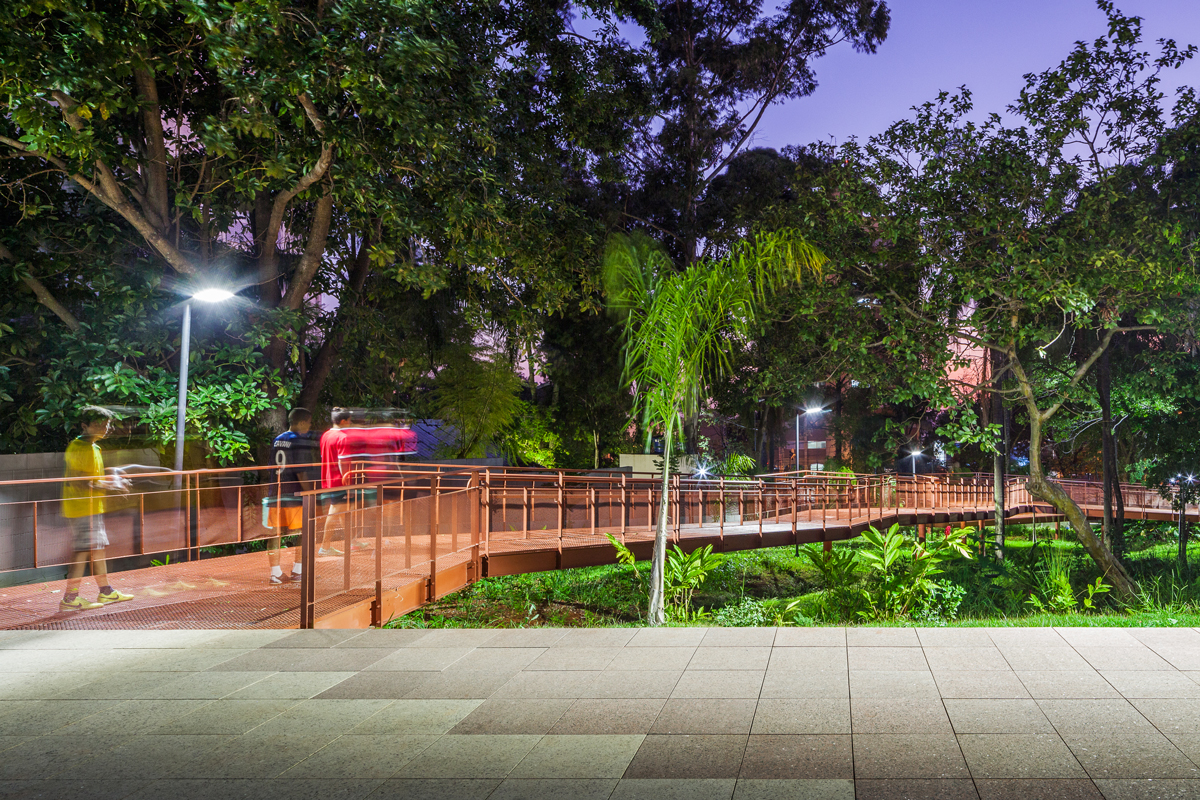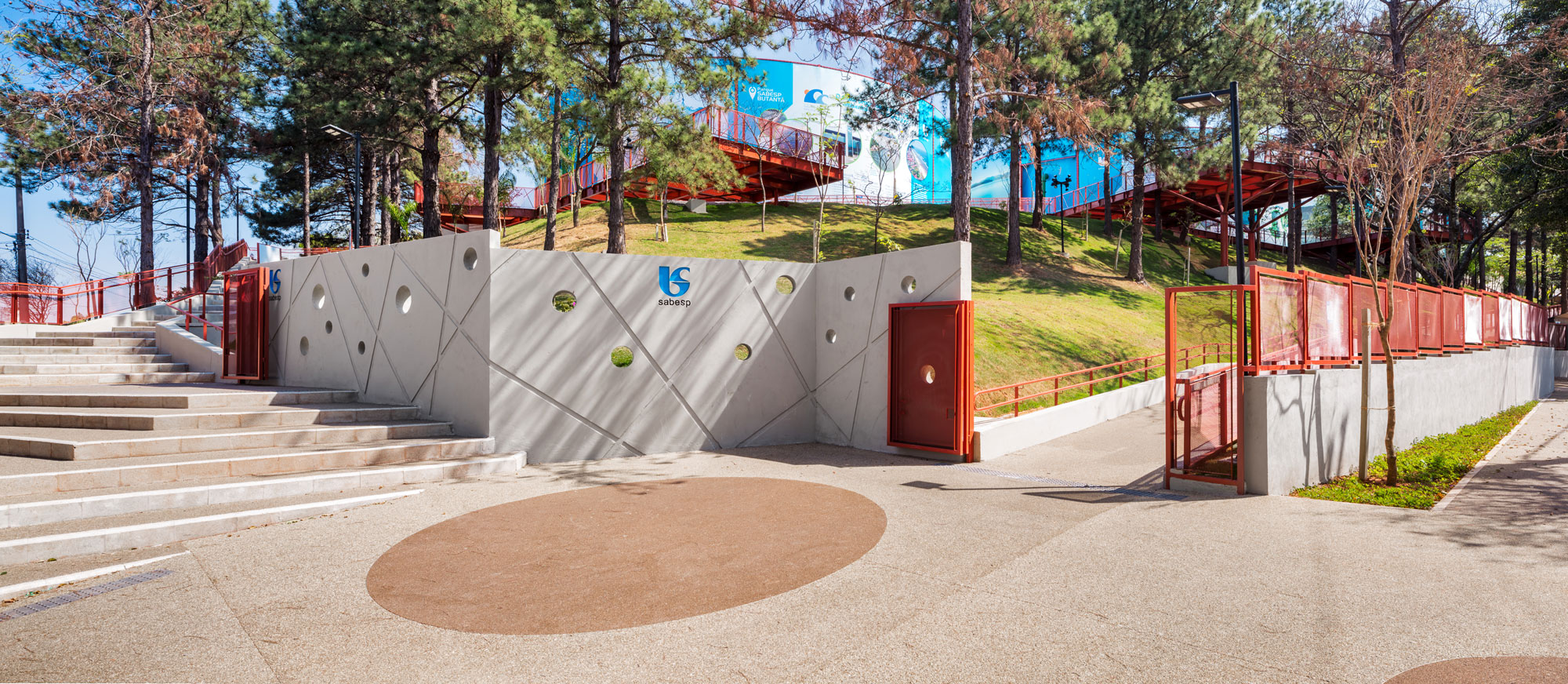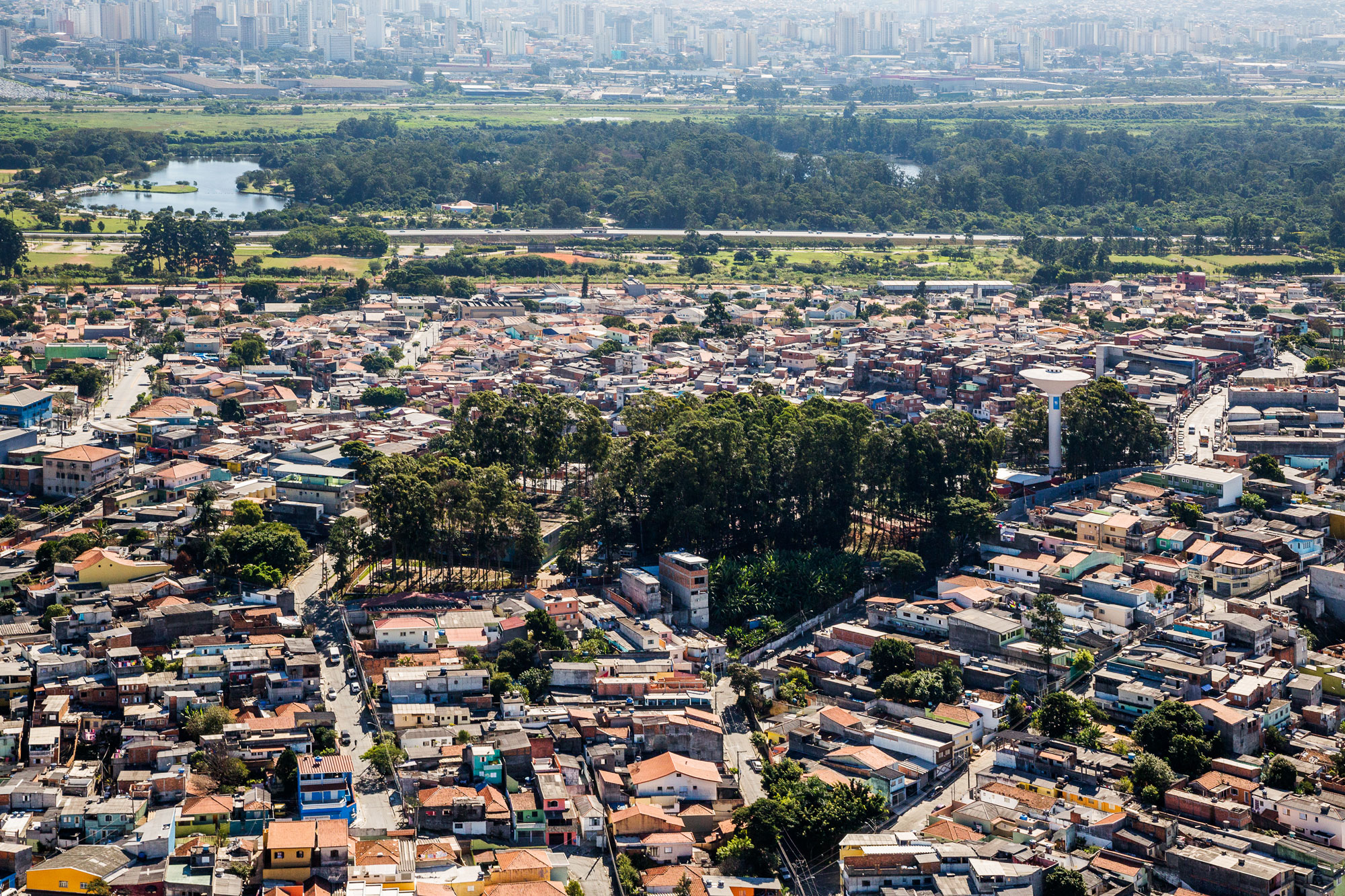PLACE
São Paulo
PROJECT YEAR
2011 | 2012
INAUGURATION YEAR
2014 | 2015
INTERVENTION AREA
60.210 m²
Based on SABESP’s need to house its reservoirs and water treatment plants, several parks were built by the city of São Paulo. To achieve this objective, in addition to contributing to the promotion of an ecologically balanced space, the company consulted several architecture offices. The Utility company wanted projects for three parks that would create a dialogue between visitors and supply activities, in addition to the revitalization of operating buildings for heritage protection.
The project proposed by Levisky Arquitetos was selected because of our renovation plans and the idea of opening the maneuver house, in addition to the machinery area of Parque da Mooca (a neighborhood in São Paulo) for exhibitions around the reservoirs. Thus, visitors can learn, in a didactic way, the work done by Sabesp while enjoying the area for fun. For this, the project created sports and leisure routes amid the dense vegetation around the building.
In the parks in Butantã and Cangaíba neighborhoods, considering their rugged profiles, the proposed routes connected high and low points of the surrounding streets, creating a flow of pedestrians with accessibility, safety, and comfort. Open squares were designed for permanence and coexistence that consider and stimulate the native vegetation, connected by signposted recreational paths that educate about water cycles and treatment technologies. Drawings on the floor of the pipe course from the maneuver house also teach and connect the spaces. The public also uses furniture and equipment in the park, such as an outdoor gym and a playground.
The renovation and opening of the parks have brought great gains to the neighborhoods due to an important acceptance by the residents, contributing to the local quality of life and placing themselves in the urban context they are part of. The Mooca park, in particular, due to its location in an area of tradition and history of the city, rescued the local memory, creating an immediate connection with the public and the residents’ association.








